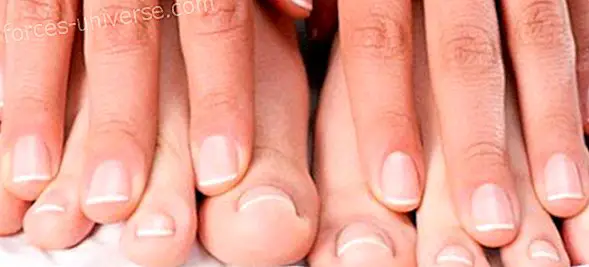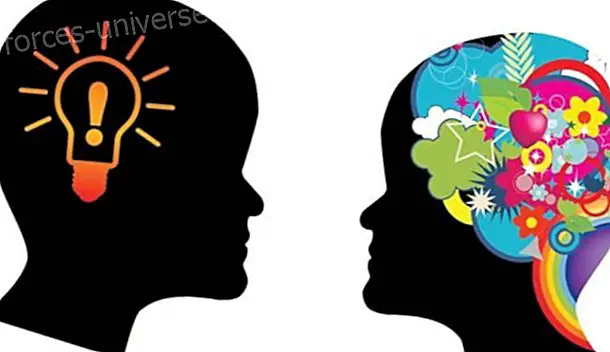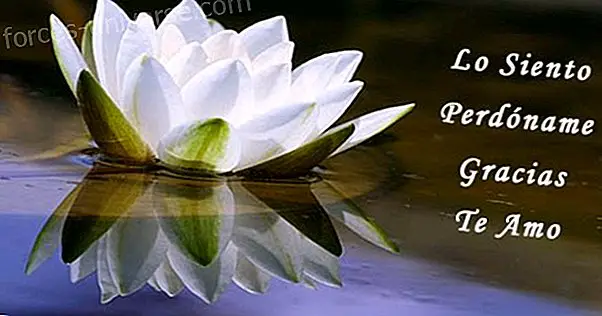 Taken from the book: "IMPROVE YOUR HEALTH WITH YOGATERAPY"
Taken from the book: "IMPROVE YOUR HEALTH WITH YOGATERAPY"
Author. Rolando Leal Martínez.
CONTENT
Introduction
The breathing
Respiratory process
Yogi breathing
Secrets of conscious breathing
Benefits of complete breathing
Exercise 1 Vacuum breathing
Exercise 2 Sustained Breathing
Pranayama physical effects
Exercise 3 Rhythmic Breathing
Exercise 4 Rhythmic breathing with retention
About the Author
Bibliography
Farewell.
INTRODUCTION
Through these writings we intend to share some knowledge related to the practice of conscious breathing; we will review the concept of breathing, complete breathing or yogi, the secrets of conscious breathing, the physical effects of pranayama and we will teach four breathing exercises: vacuum breathing, sustained breathing, rhythmic breathing and rhythmic breathing with retentions, all with the purpose of helping readers in their self-realization process.
THE BREATHING
We begin our presentation of this topic with the following statements:
1. Breathing is living. Human life in matter begins with an inhalation and ends with an exhalation. This means that while we have life we will be breathing, and therefore our manifested life depends directly on the respiratory process.
2. Breathing is an essential function for good organic functioning. All other functions are interrelated with each other and that is why they depend on breathing to function properly.
3. It is a function of nutrition of both the vegetable and animal kingdom. It is a gaseous exchange between an organism and the environment. This vital function allows the expression of organic life and its interrelation with its natural environment.
4. Health depends on proper breathing. Since the blood is vitalized and purified through breathing, and this is the sustenance of the body's cells, it is therefore vitally important to know how to breathe.
5. Breathing is physical, mental and spiritual. Physical as for the organic process itself, mental for the influence on the nervous system and the brain that in turn serves as an expression of psychic processes, spiritual in the sense that it can be done at will, consciously and not only that but it influences in the awakening of the practitioner's internal or superior consciousness.
After meditating on these statements, let's study the respiratory system.
1.Nose and nostrils.
2. Pharynx and larynx.
3. Trachea.
4.Bronch, bronchioles and alveoli.
5.Lungs
RESPIRATORY PROCESS
It begins with an inhalation through the nostrils, we must always inhale through the nose, it is the proper conduit for this vital function, it serves to normalize the outside air temperature on the one hand, and on the other the villi of the nasal passages stop impurities from the environment that are then expelled during exhalation that we must also perform through the nose, except in breathing exercises where it is allowed to exhale through the mouth to produce certain special effects, this will be studied later.
The inhaled air passes through the pharyngeal cavity and the larynx, from there it is introduced into the trachea traveling to the right and left bronchi, it is distributed by the bronchioles that are like ramifications and from these they pass to the pulmonary alveoli that are air cells that they are counted by thousands in the lungs. This is where one of nature's most interesting and wonderful mechanisms occurs: the vitalization and purification of the blood. Through exhalations, carbon dioxide is eliminated and the blood is purified, and when we inhale we receive the oxygen that in turn is assimilated by the vitalizing blood, which is why the transcendent importance of breathing is so important.
It is important to highlight the work of the diaphragm, which is a muscle that is located between the thorax and the abdomen, thanks to its contraction and dilation allows the expansion of the lungs and the absorption and expulsion of air in them. Now let's briefly review the functioning of the circulatory system in relation to breathing.
From the heart the blood flows through the arteries bringing vitality to all the cells of the organism, from here it passes to the capillaries that serve as a bridge between the arteries and the veins, through them the blood returns to the heart collecting all the impurities to its step so that they are eliminated in the lungs by exhalation. When venous blood reaches the heart it is propelled into the lungs, and here it is purified and vitalized; purification takes place when exhalations and vitalization occur when we inhale the air, so the blood is transformed from venous or impure into arterial or vitalized, this process is called hematosis, the blood is sent back to the heart, which continues It goes to its life cycle by sending blood through the arteries to feed all the organic cells.
Blood is formed by the assimilation of the vital substances of the food we consume, but it is purified and vitalized by breathing. That is why it is important to practice breathing exercises that help us keep this natural process working in an excellent way; that is, if we only breathe normally, it is not enough to purify and vitalize the blood.
Breathing is an autonomous process that can also be voluntary, with normal breaths we only maintain the organism, with additional exercises we obtain great benefits not only at the level f psychic, but mental and spiritual, as we will see in the next lessons. In a period of 24 hours around 17, 000 liters of blood reach the lungs, it is a truly amazing and wonderful journey. If we do not breathe deeply then the venous blood upon reaching the lungs is not purified and is not loaded with enough vitality, this causes the blood to be malleable, and thus continues its path but now it is not fully complying with its mission, since the arterial blood that should be clean and energized is not at all and this process begins to cause disturbances in the physiology of the organism, and thus appear problems of Health.
This deficiency of oxygen in the blood combined with disturbing substances that have not been eliminated, causes all kinds of discomforts and weakening in the organic functioning, and also influences all this in mental processes through the nervous system, which is nourished like all the apparatus and systems of the body of blood energy; if the nervous system and the brain do not receive their necessary supply of oxygen, they cannot function properly and weakness or irritability in the nerves begins to manifest, which the individual suffers unnecessarily and affects him in his personal development and in his life of relationship with his peers. To such a degree is this problem that if the nervous system is malfunctioning, the mental processes are deeply disturbed, negative emotions and disturbing thoughts and ideas are generated, which could be avoided if we lived more in in harmony with natural laws, taking care of food, breathing, proper exercise, rest and hygiene.
With the above we consider that it is enough for now to have an idea of the importance of knowing how to breathe. We recommend reading in a book of Anatomy what is related to the respiratory and circulatory system, to expand in more detail what has already been explained in this chapter.
THE YOGUI BREATH
We will continue our study of breathing, now deepening the point of view of Yoga; We will see the secrets of conscious breathing, yogi breathing, its benefits and some basic breathing exercises. We will study the secrets of conscious breathing as they have been taught in the Yoga system through the ages.
SECRETS OF CONSCIOUS BREATHING
1. Inhale and exhale through the nose. Just exhale through the mouth in certain special exercises, which we will see later.
2. Use the pharyngeal area to inhale and exhale, this is to be able to absorb and expel a greater amount of air. The air should be pulled from near the throat, to verify that we are doing well, we should feel something fresh in the throat when inhaling in this way. This is done with the mouth closed and using the nostrils as we have explained.
3. When inhaling take out the abdomen, when exhaling put the abdomen. This mechanism can be checked as follows: sitting comfortably with a straight back, we put our hands on the abdomen, inhale and see if the abdomen comes out or goes in, exhale and perform the same observation. Since we verify this, we practice several times to correct the movement or to raise awareness if we already do it well.
4. Accommodate the tip of the tongue inside the upper teeth. This when we do conscious breathing exercises serves to eliminate unnecessary tensions in the face, the jaw is loosened and a state of tranquility and relaxation is induced.
5. Deep or complete breathing. We will study this way of breathing next.
Yogi breathing is precisely the complete way of breathing. It is called that because it allows us to fully fill the lung capacity, normally we only use approximately one third of our total capacity. At first, when it is explained, it seems to consist of three steps, which are precisely three ways of breathing and are the following:
1. Low or abdominal breathing.
2. Medium or intercostal breathing.
3. High or clavicular breathing.
Low breathing works a lot with abdominal movement, we can observe it in some people, in whom this type of breathing predominates.
The average breathing is less noticeable, it is a movement towards the sides, as if the ribs expanded when inhaled.
High breathing is also very manifest, when someone breathes in this way the chest expands and the shoulders are lifted.
These three types of breathing must be harmonized in a single movement and process, in this way we receive the benefits integrated into a single complete breath that is the yogi breath.
In the clavicular respiration a third of the lung capacity is used, the upper part only, in the intercostal it is reached halfway, in the abdominal air is received in the middle and lower part of the lungs
Only by integrating the three movements in a harmonic process are the lungs fully filled obtaining with this a greater oxygenation and vitalization of the blood and therefore of the whole organism, as a complement to the above, a stronger exhalation is also performed naturally, which promotes the purification of the blood so necessary to function well in all aspects. Full or deep breathing is properly the foundation of all yogi science of breathing.
Let us now study its process: Sitting comfortably on the floor with your legs crossed with your back straight or in a chair resting your feet on the floor. It is recommended to practice outdoors or in a well ventilated room.
Air is taken through the nose, pulling the air from the pharyngeal area as we explained in the previous lesson, when taking air the abdomen is removed, this is produced by the movement of the diaphragm. Now the ribs continue to be expanded to the sides while the air is still being taken, then the chest is expanded and the shoulders are lifted naturally while still inhaling deeply. He holds the air for a moment and exhales slowly through his nose. At the beginning of exhalation, the abdomen is inserted and gradually pressed while the air is completely removed from the lungs. The process is repeated again. We will simplify the steps without the complementary explanations.
1.Inhale slowly through the nose while inhaling:
1.1 Remove the abdomen.
1.2 Expand the ribs.
1.3 Expand the chest.
2. Stop a moment.
3. Exhale slowly through the nose, while exhaling:
3.1 Tuck the abdomen.
4. Stop a moment.
You have to practice this process until it becomes automatic and normal, especially if you feel a single harmonious and pleasant movement. Breathing is a pleasure.
BENEFITS OF COMPLETE BREATHING
a .. Perfect aeration of the lungs.
b .. Increased oxygen in the blood and tissues.
c .. Massage to the abdominal organs.
d .. Stimulates the functioning of the heart.
e .. Balances the endocrine system.
f .. Vitalizes the nervous system.
g .. Fortifies the respiratory system
h .. Act positively on psyche.
i .. It energizes the body-mind unity.
j .. Improves self-control.
k .. Energy centers or chakras are activated harmonically.
After knowing the yogi breathing, we will go on to study two fundamental breathing exercises. We recommend that at the beginning they be performed while the practitioner is seated, then they can stand up.
EXERCISE 1. VACUUM BREATHING
Sitting comfortably on the floor with your legs crossed with your back straight or in a chair resting your feet on the floor. It is recommended to practice outdoors or in a well ventilated room.
Inhale through the nose, full breath.
Exhale through the mouth (lips in whistling position).
Suspend and run out of air, about 10 seconds.
Inhale and repeat the cycle.
The way to exhale as done in this exercise is known as purifying breathing. We practice this type of breathing during psychophysical gymnastics, as we will see later. We include it in vacuum breathing to further enhance its positive effects. It is important to run out of air completely, you have to exhale as much as possible.
Gradually you can increase the suspension time, say 20 seconds, depending on the capacity of each practitioner. It is not very advisable to run out of air a lot, it can even cause dizziness or a small faint if one exceeds this. That is why I recommend an average of 10 seconds to start and maximum 20 seconds when it has been practiced for a good time, and the student feels with enough capacity and confidence to last a little longer, remember that Yoga is balance in everything. Inhaling is fast and strong to fill with air and immediately exhales. Some benefits of this exercise:
a .. Activates intestinal function by pressing the abdomen.
b .. Promotes blood circulation and tissue detoxification.
c .. Change the density of blood.
d .. Repairing and disappointing effect.
e .. Promotes the expulsion of toxins and increases natural immunity.
f .. Fights depression and is soothing of the nerves.
· Calms emotions and helps control thoughts.
EXERCISE 2. SUSTAINED BREATHING
Sitting comfortably on the floor with your legs crossed with your back straight or in a chair resting your feet on the floor. It is recommended to practice outdoors or in a well ventilated room.
Inhale through the nose, full breath.
Hold the air, about 10 seconds.
Exhale strongly through your nose, until you run out of air.
Inhale again, continue the cycle.
The same recommendation we made in the previous exercise now in relation to air retention, an average of 10 seconds to start, and then gradually increase up to 20 seconds according to the capacity of each individual. Do not overdo it, seek the balance of Yoga. Here the process is reversed, the inhalation is gradual and the exhalation is fast and powerful, immediately after exhaling all the air is inhaled again to continue the cycle. Some benefits of this exercise:
a .. Develops a sedative action on the nervous system.
b .. It decreases the heart rate and normalizes it.
c .. It vitalizes the blood and the whole organism.
d .. Cleanses the nasal passages.
e .. Strengthens the psychophysical unit.
f .. Educate the will.
g .. Generates self-confidence and enthusiasm for life.
We recommend practicing these two exercises every day, especially in the morning, when you wake up. First three times that of vacuum breathing, then three times that of sustained breathing. Do not move on to the exercises of the next lesson until you have practiced exercises 1 and 2 for at least one week, then those of the next chapter are added and so on.
PHYSICAL EFFECTS PRANAYAMA
The word pranayama can be divided into prana which means vital energy and yama which means control, so the whole word refers to the control of vital energy. It is related to breathing because it is through it that we can receive and manage the vital energy in a more conscious and voluntary way. Prana is found in all things, it is the energy that is received through solar rays, air, water and food.
The ancient nature-observing yogis and their laws realized that breathing could be voluntary and involuntary, and discovered the wonderful power that was in the air we breathe. Prana is not oxygen itself, but something more subtle that is received through breathing, or also by the other natural elements that I already mentioned. Only it is easier to handle by breathing than by other means. The vital energy was known by the different cultured peoples of antiquity, they called it with different names according to their language. In China and the East it is known as chi or ki, in ancient Persia as ga-llama, among the Greeks as nous, and in India as prana as we have already mentioned.
That is why breathing exercises are considered with great respect and admiration by those who know these principles, formerly reserved for a few initiates. At present, this knowledge considered esoteric or hermetic is being disseminated because the spirit of the times already allows it, since humanity is already prepared to receive them.
It is up to us how we are going to use these secrets of yesteryear and obtain with them the valuable results they can provide. In the Yoga system pranayama plays a very important role, and that is why we include it in these basic lessons. What we are looking for is not only the practice of a respiratory exercise, but the control of vital energy, this control understood as adequate management of prana to obtain positive results in all aspects of our being : the physical, the mental and the spiritual. Next we will study some positive physical effects of pranayama:
a .. Increase in body energy.
b .. Rejuvenation of tissues.
c .. Prolongation of youth.
d .. Greater health and vitality.
e .. Purification and vitalization of the blood.
f .. Strengthening of all body organs.
g .. Development of lung capacity.
h .. Stimulus to the endocrine glands.
i .. Balance of the nervous system.
Pranayama as a process consists of 4 steps:
Inhale or puraka
Hold or kumbhaka
Exhale or reject
Hold or sunyaka.
When there is a correspondence between the duration of each of these steps, we achieve a rhythm in breathing, this rhythmic process harmonizes us with the universal rhythm. There are various ways to achieve the respiratory rate, which we teach and practice is as follows.
EXERCISE 3. BREATHING RESPIRATION
Sitting comfortably on the floor with your legs crossed with your back straight or in a chair resting your feet on the floor. It is recommended to practice outdoors or in a well ventilated room.
Inhale through the nose in 4 seconds,
Hold 2 seconds
Exhale through the nose in 4 seconds,
Hold 2 seconds
The rhythm is marked by the difference between pauses and inhalation and exhalation, what it takes us to inhale must be the same to exhale and the pauses must last half of the previous time. For beginners who have never done these breathing exercises we recommend this rhythm: 4-2-4-2. Subsequently, as we develop more lung capacity, we proceed to the rhythm: 6-3-6-3. Later we can change to the rhythm: 8-4-8-4. We recommend doing the exercise sitting comfortably, we can also perform it standing, if we prefer. Some benefits of this exercise:
a .. Development of patience and perseverance.
b .. Increase the power of will.
c .. It harmonizes us with the universal rhythm.
d .. It allows the nervous system to balance and calm down.
e .. Stimulates the endocrine glands.
f .. Help mental concentration.
g .. Emotions stabilize.
h .. The body and mind are tuned.
After practicing the three previous exercises, we are ready to synthesize them in the fourth exercise of pranayama.
EXERCISE 4. BREATHING BREATHING WITH RETENTIONS
Sitting comfortably on the floor with your legs crossed with your back straight or in a chair resting your feet on the floor. It is recommended to practice outdoors or in a well ventilated room.
Inhale in 4 seconds,
Hold 8 seconds
Exhale in 4 seconds,
Hold 8 seconds
The proportion is now reversed in such a way that the suspensions are double that of inhalation and exhalation. The pace can be: 6-12-6-12. Those who have more capacity can practice with: 8-16-8-16. And for the most advantageous we suggest: 10-20-10-20. Each student must find their own breathing rhythm, not try to force themselves, it must be natural and comfortable; The path of Yoga is nonviolence, that is, harmony with the laws and principles of nature. The benefits of this exercise are the same as the previous one plus the positive effects of the first two.
ABOUT THE AUTHOR
Rolando Leal Martínez is an architect, psychologist, university teacher and writer, he directs the RLM Comprehensive Improvement Center since 1988 to date, where he has been an instructor of Yoga therapy and human development courses; He is currently a professor of ITESM and has a comprehensive psychotherapy office.






